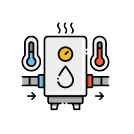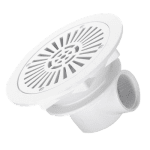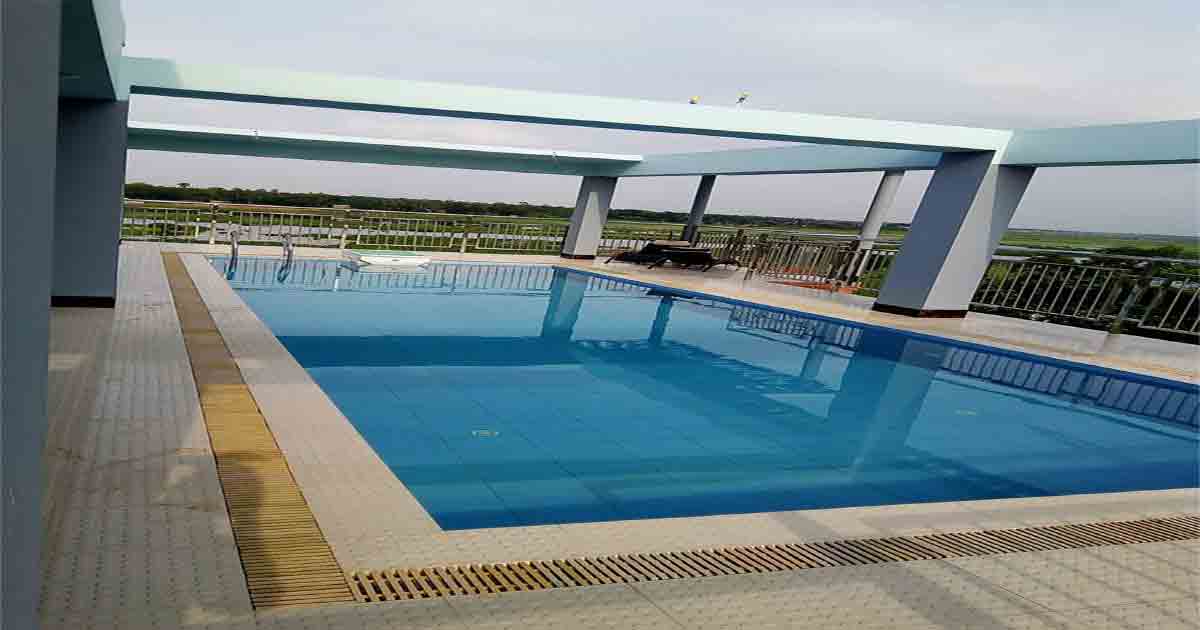Swimming pool cleaning and maintenance
Swimming pool cleaning and maintenance is essential to ensure its longevity, aesthetic appeal, and most importantly, the health and safety of its users. Proper maintenance involves a combination of regular cleaning routines, chemical balancing, and occasional repairs. Let’s delve into the detailed process of swimming pool cleaning and maintenance to understand the intricacies involved.
1. Daily Skimming and Surface Cleaning (Swimming pool cleaning and maintenance)
The first line of defense in pool maintenance is daily skimming and surface cleaning. This involves using a long-handled skimmer net to remove leaves, insects, debris, and any other floating objects from the water’s surface. Regular skimming prevents these materials from sinking to the bottom of the pool, which can make cleaning more difficult and impact water quality. This task should ideally be performed every day, especially during periods of heavy leaf fall or windy weather.
2. Brushing Walls and Tiles (Swimming pool cleaning and maintenance)
To prevent the buildup of algae and other contaminants, the pool walls and tiles should be brushed on a weekly basis. This helps to loosen debris and algae that may be clinging to the surfaces, making it easier for the filtration system to remove them. Different brushes are used for different pool surfaces—concrete, vinyl, or fiberglass—to avoid damage and ensure effective cleaning.
3. Vacuuming the Pool (Swimming pool cleaning and maintenance)
In addition to skimming, vacuuming the pool floor is necessary to remove debris that has sunk to the bottom. There are various types of pool vacuums available, including manual vacuums that connect to the pool’s filtration system and automatic robotic vacuums that operate independently. Vacuuming should be done weekly or more frequently if the pool sees heavy usage or is located near trees.
4. Cleaning the Filter (Swimming pool cleaning and maintenance)
The pool filter plays a crucial role in removing dirt, debris, and other particles from the water. There are three main types of pool filters: sand filters, cartridge filters, and diatomaceous earth (DE) filters. Regardless of the type, filters need regular cleaning to maintain optimal performance. This involves backwashing (for sand and DE filters) or removing and cleaning the filter cartridge. Frequency of cleaning depends on the filter type and how often the pool is used, but a general guideline is once every 1-3 months.
5. Maintaining Water Chemistry (Swimming pool cleaning and maintenance)
Balancing the pool water chemistry is critical for both swimmer comfort and preventing damage to pool equipment and surfaces. Key parameters to monitor and adjust include pH levels, chlorine or other sanitizers, alkalinity, and calcium hardness. Testing kits are used to measure these levels regularly, and adjustments are made as necessary. Improper water chemistry can lead to cloudy water, algae growth, and irritation to swimmers’ skin and eyes.
6. Shock Treatment and Algaecide (Swimming pool cleaning and maintenance)
Occasionally, the pool may require shock treatment to oxidize organic contaminants and restore water clarity and cleanliness. This involves adding a high dose of chlorine or non-chlorine shock to the pool water. Algaecides may also be used to prevent or treat algae blooms, especially in warmer months or if the pool has experienced prolonged periods of neglect.
7. Inspecting and Maintaining Equipment (Swimming pool cleaning and maintenance)
Regular inspection and maintenance of pool equipment are crucial to ensure everything operates efficiently. This includes checking and cleaning pump baskets, ensuring the pump and motor are working correctly, inspecting seals and gaskets for leaks, and lubricating o-rings and other moving parts as needed. Properly functioning equipment not only keeps the pool clean but also extends its lifespan.
8. Winterizing (for Seasonal Pools)
For pools that are closed during the winter months, proper winterization is essential to protect the pool from damage caused by freezing temperatures and ice formation. This involves lowering the water level, draining and blowing out the plumbing lines, adding winterizing chemicals, and covering the pool with a durable winter cover. Properly winterizing the pool ensures it will be in good condition when it’s time to reopen in the spring.
9. Professional Maintenance and Repairs
While much of pool maintenance can be handled by diligent homeowners or pool operators, there are times when professional assistance is necessary. This includes complex repairs to equipment, leak detection and repair, and specialized cleaning services such as acid washing to remove stubborn stains or algae buildup. Professionals also have the expertise to diagnose and resolve water chemistry issues that may be challenging for amateurs.
Proper swimming pool cleaning and maintenance is essential to ensure a safe, clean, and enjoyable swimming experience. Regular maintenance not only keeps the water sparkling but also extends the lifespan of the pool’s equipment and structure, preventing costly repairs.
Key Steps in Swimming Pool Cleaning and Maintenance
- Skimming and Vacuuming: Debris such as leaves, insects, and dirt can accumulate on the surface of the pool. Skim the pool daily using a net to remove floating debris. Vacuuming the pool once a week helps clean the pool floor, removing any dirt, sand, or algae buildup.
- Brushing Pool Walls and Tiles: Brushing the pool walls, steps, and tiles is important to prevent algae and calcium deposits from forming. A stiff brush can be used for plaster-lined pools, while a softer brush is ideal for vinyl or fiberglass pools. Clean the tiles regularly to prevent staining and buildup.
- Balancing Pool Water Chemistry: Maintaining the proper chemical balance is crucial for keeping the water safe and clean. Check the pH level regularly, aiming for a range of 7.4 to 7.6. Test the chlorine levels to ensure they are between 1-3 ppm to keep the water sanitized and free from harmful bacteria. Additionally, monitor alkalinity and calcium hardness levels to prevent scaling and corrosion.
- Filtration System Maintenance: The pool’s filtration system plays a key role in removing dirt and impurities from the water. Clean the filter regularly, depending on the type (sand, cartridge, or diatomaceous earth), to ensure efficient operation. A clean filter keeps the water clear and reduces the strain on the system.
- Shock Treatment: Conducting a shock treatment (super-chlorinating the water) once a week helps eliminate contaminants and organic waste that may not be removed through normal chlorination.
Routine swimming pool cleaning and maintenance ensures a healthy and enjoyable swimming environment, prolonging the life of the pool and its components.
Maintaining a clean and well-functioning swimming pool is essential for creating a safe, enjoyable experience for swimmers. Regular pool cleaning and maintenance prevent the growth of harmful bacteria and algae, help equipment run efficiently, and extend the life of the pool structure and surfaces. In this guide, we’ll explore key steps for pool cleaning, essential maintenance tasks, and tips to keep your pool water balanced and inviting all season long.
1. Essential Pool Cleaning Tasks
To keep your pool clean, regular attention to its surface, water, and filtration system is crucial. Here are the main cleaning tasks every pool owner should perform:
- Skimming: Use a skimmer net daily to remove floating debris like leaves, insects, and other organic material. This helps prevent clogging in the pool filter and stops debris from sinking to the bottom.
- Brushing: Brush the pool walls, floor, and steps weekly to remove any algae, dirt, or calcium buildup. Focus on areas with low water circulation, such as corners and ladders, where algae are more likely to grow. Use a brush suited to your pool’s surface; softer brushes work well for vinyl or fiberglass, while stiffer brushes are better for concrete.
- Vacuuming: Regular vacuuming is essential for keeping the pool floor free of dirt and debris. There are three main types of vacuums: manual, automatic, and robotic. Manual vacuums are cost-effective and provide precise cleaning, while robotic and automatic vacuums save time and can cover large areas with minimal effort.
- Tile and Waterline Cleaning: The waterline can accumulate oils, sunscreen residue, and calcium deposits, creating a ring that detracts from the pool’s appearance. Use a specialized tile cleaner and a soft brush to scrub this line weekly.
2. Balancing Pool Chemistry
Proper water chemistry is fundamental for pool cleanliness, swimmer safety, and preventing damage to the pool’s surfaces and equipment. Regularly testing and balancing the pool water helps keep bacteria and algae growth under control while ensuring a comfortable swimming experience. Here’s a breakdown of key chemicals to monitor:
- pH Level: The pH level should be between 7.4 and 7.6. Water that’s too acidic (pH below 7.2) can irritate skin and corrode pool equipment, while water that’s too alkaline (pH above 7.8) can cause cloudiness and scaling on surfaces.
- Chlorine: Chlorine is the primary sanitizer used to kill bacteria and algae in pool water. Free chlorine levels should be maintained between 1.0 and 3.0 ppm (parts per million). Regular chlorine testing and adjustment are essential, especially during hot weather or after heavy pool use.
- Alkalinity: Total alkalinity stabilizes pH levels, keeping the water chemistry balanced. The recommended range for total alkalinity is 80 to 120 ppm. Use alkalinity increasers or reducers as needed to maintain these levels.
- Calcium Hardness: This measures the amount of dissolved calcium in the water, which helps prevent pool surfaces from eroding. Ideal calcium hardness levels are between 200 and 400 ppm. If calcium levels are too high, scaling can occur; if too low, surfaces may become rough or pitted.
- Shock Treatment: Shocking the pool is the process of adding a high dose of chlorine to eliminate contaminants and organic materials. It’s recommended to shock the pool every one to two weeks, or more often if the water looks cloudy, algae is present, or there’s been heavy usage.
3. Maintaining the Pool Filtration System
The pool’s filtration system is responsible for circulating and filtering water to remove impurities. Keeping the filtration system well-maintained ensures water clarity and hygiene.
- Pump and Motor: The pool pump circulates water through the filter, helping distribute chemicals and remove debris. Regularly check the pump for any unusual noises or leaks and have it serviced if needed.
- Filter Cleaning: Pool filters capture debris and particles, so they need periodic cleaning to function effectively. The three main types of pool filters are sand, cartridge, and diatomaceous earth (DE). Sand filters require backwashing (reversing water flow) every few weeks; cartridge filters should be rinsed monthly; and DE filters need backwashing and re-coating with DE powder as necessary.
- Skimmer and Pump Baskets: Skimmer and pump baskets trap larger debris before it reaches the filter. Empty these baskets weekly to prevent blockages and maintain good water flow.
4. Seasonal Pool Maintenance
In addition to regular cleaning, there are specific maintenance tasks to consider during seasonal changes:
- Opening the Pool: At the beginning of the season, remove the pool cover, check for any leaks or cracks, and test the equipment. Clean and shock the water, and adjust the chemical balance before swimming.
- Closing the Pool: Before closing your pool for the winter, balance the water, clean the pool, and remove all equipment. Drain water from the pipes, pump, and filter to prevent freezing damage, and use a winter cover to protect the pool from debris.
5. Hiring a Professional Pool Maintenance Service
For busy pool owners or those with large pools, hiring a professional pool maintenance service can save time and ensure expert care. Professionals have the skills to manage complex cleaning tasks, maintain water chemistry, and inspect equipment for early signs of wear or failure.
Conclusion
In conclusion, maintaining a swimming pool involves a combination of regular cleaning, water testing, equipment maintenance, and occasional treatments to ensure clean, safe, and enjoyable swimming conditions. Consistent upkeep not only enhances the aesthetic appeal of the pool but also prolongs its lifespan and minimizes the need for costly repairs. By following a structured maintenance routine and addressing issues promptly, pool owners can create a healthy and inviting environment for themselves and their guests to enjoy throughout the swimming season.


















